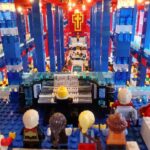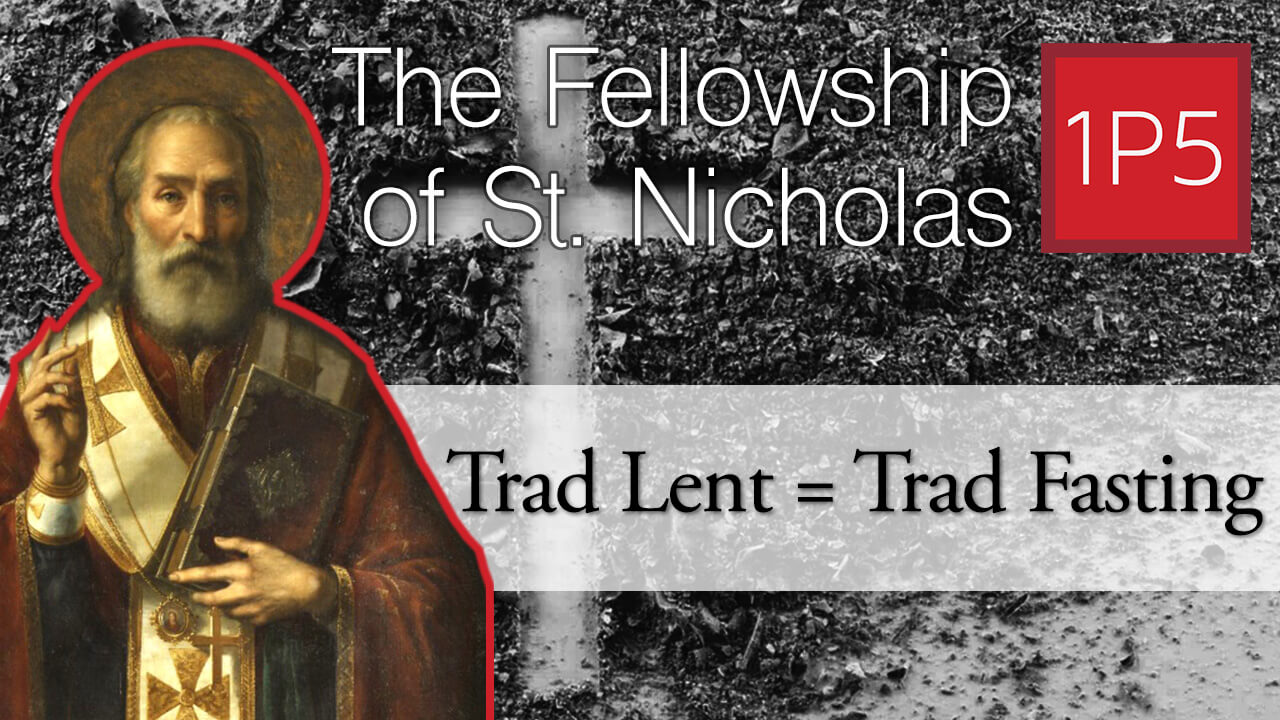The Lego Church Project: John Kraemer on Evangelization & Disability Awareness
In a world where creativity and faith intersect, John Kraemer has carved out a unique niche with his remarkable Lego Church Project. For over two decades, John has been meticulously designing and constructing intricate, awe-inspiring churches entirely out of Lego bricks. His passion for both the iconic building blocks, being an advocate for disability awareness, […]



In a world where creativity and faith intersect, John Kraemer has carved out a unique niche with his remarkable Lego Church Project. For over two decades, John has been meticulously designing and constructing intricate, awe-inspiring churches entirely out of Lego bricks. His passion for both the iconic building blocks, being an advocate for disability awareness, and his deep-rooted faith has led to the creation of these miniature masterpieces that resonate with people from all walks of life, who may face various challenges or disabilities.
John’s Lego churches are not just feats of engineering; they are vibrant representations of community, spirituality, and artistry. Each structure tells a story, capturing the essence of church architecture. As his creations continue to gain recognition and admiration, I had the privilege of interviewing John to delve into the heart of his work. John shares the inspiration behind the Lego Church Project, the challenges he faces, and his vision for the future.
Join us as we explore the captivating world of Lego churches and the man who brings them to life, one brick at a time.
What inspired you to start the Lego Church Project, and how did the idea first come about?
I grew up in Saginaw, Michigan, which is a few hours north of Detroit. For a decent amount of time, we lived less than a block away from Christ The Good Shepherd Parish (at the time it was known as St. Helen). So the church was something our family was involved in. Lots of activities and taking part in the life of the church. This shaped my ideas of what I could build with LEGO given my own challenges at the time.
What turned this from a child’s idea into something more powerful is when I started doing public displays. Until then, only friends and family had seen or even known about my work. This first public display, which was at Christ The Good Shepherd, started the slow process of turning my hobby into a disability-focused ministry. At the time, I was coming back to my home parish. It has taken me a long time to reach the point where I am at.
How has working on the Lego Church Project influenced your personal faith?
For me, the mission of The Lego Church Project has always been rooted in the issues of those with disabilities. I have a mild form of cerebral palsy, so I’m showing that, no matter what challenge or disability we face, God can still use your talents.
The project allows me to explore the depths of prayer by allowing me to see the beauty in the church through the bricks. Prayer has become the foundation of my work. As I am building, I am praying. Taking all my worries, my fears, and the stuff that is going on around me, and putting everything before the Lord with each brick I place.
As this has turned into a ministry, working on the project each year allows me to see what kind of role I get to play in the life of the church.
What are some of the biggest challenges you’ve faced while working on the Lego Church Project, and how have you overcome them?
The biggest challenges are two fold. Both with the build and trying to find parishes willing to host me.
Regarding the build, I am taking a medium, and I’m building something larger than most LEGO sets on the market. We are talking about a build that is 47x25x25 inches and uses close to eighty pounds of LEGO. So unfortunately sometimes the base plates will warp as I’m working. Other times, parts and sections won’t line up correctly. Sometimes an idea looks good on paper but doesn’t work out as intended. I’m confronting my anxiety as I’m working. I have to find creative solutions to the problems that I run into.
Then comes the task of trying to find parishes willing to host me. Calling to mind the parable of the talents, a project of this nature is not meant to be hidden from view; it is meant to be shared with everyone. The challenge is, though, that not all parishes are open to the idea of having me come out.
I’ve been told more than a few times that they are not interested, while at the same time telling me I’m doing important work. Many people in parish leadership see the LEGO, but they don’t see the mission or story behind it. Many parishes right now are not doing any real extra activities—add to this the fact that I don’t drive, and the parishes would have to provide transportation, and they’re even less open to the idea.
Of course, this makes things extremely difficult for me, unless I get a few invites. I have found that if a parish really does want me out, then they will find a way to make it happen.
How has the Lego Church Project been received by the community and beyond? Are there any particular reactions or stories that stand out to you?
Both online and in-person communities are often surprised by my work—perhaps more so when they realize that I have a disability. I’m not a trained architect, so the fact that I built something this massive is amazing to people.
The children see it for what it is. It’s bright. It’s often bigger than they are. There are a lot of details inside to see. The children will spend as much time as their parents will allow to seek out all the stuff they can see. Then, with a joyful expression, they tell everyone around them.
The adults often notice that the church is full of people. They are amazed with the build itself and the complex nature of it. They also sometimes see themselves sitting inside and will be quick to point that out. It is an honest toss up as to who enjoys my work more.
I think one of the stories that really got to me was the one year I was at All Saints Parish in Bay City, MI. An older lady brought a kid that lived next door to her. He had severe disabilities and looked like his life had not been an easy one. Yet when he saw the project, his eyes lit up. You could tell he saw something in it. The lady thanked me for coming out.
Then there was time during Season 23 when I was at Nativity of the Lord Parish in St. Louis, Michigan. A grandmother had brought her grandchild over for the display, and the kid had cerebral palsy, like I do. The grandmother ended up telling me her story and shared that I had given her family hope.
It’s moments like these which keep me going, even with the challenges I face.
Do you have a favorite Lego Church Project that you have done in the past? Why is it your favorite?
I’ve been at this for twenty five years, so it’s really hard to decide which one of the twenty five I’ve built is my favorite. Even though I get asked this question all the time, my answer is rarely the same.
Some seasons do stand out more than others, though. Sometimes I bring up Season 4 because that is really the start of the project. Other times it’s Season 19 because of a disability conference I got to be part of. Lately, I’ve been reflecting on Season 23 where I had a lot of displays and got to visit some amazing parish communities. I’ve also referenced Season 18 as that was the first time I used Blessed Solanus Casey’s picture inside.
Each build is a reflection of my life and what God is asking me to share in that moment.
Editor’s Note: For more on the Lego Church Project, follow John Kraemer on X and Facebook, or subscribe to his Substack.
Photo provided by the author














